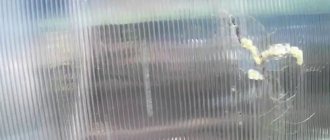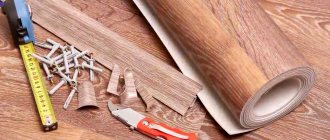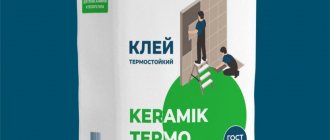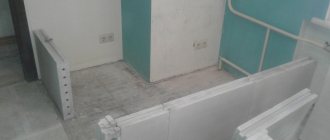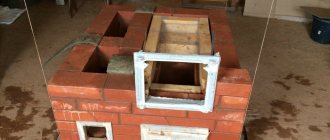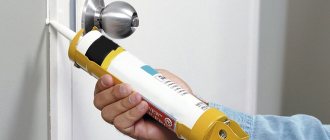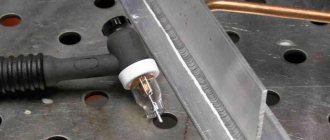Types of elastic polyurethane foam (PUF) are used in many areas of human activity. The main direction is the furniture industry. However, in order to effectively use this material and connect it to other surfaces or fabrics, you need to use a special glue for foam rubber. Knowing which adhesive form to choose and how to work with it correctly, you can get a high-quality result after the end of the process.
General information about foam rubber
Foam rubber is essentially polyurethane foam. It is a soft synthetic foam, the structure of which is filled with many small cells. The material has high levels of noise insulation, thermal insulation and elasticity.
The composition of foam rubber after a chemical reaction is a mixture of 90% air with certain chemical components. In particular, isocyanates, hydroxyl-containing oligomers, water, catalysts, and emulsifiers are present.
Thanks to this, foam rubber has a number of strengths:
- Does not become moldy.
- Retains its shape at temperatures from –40 to +90 degrees Celsius.
- High rate of sound insulation and thermal insulation.
Despite the above advantages, the material has several disadvantages:
- It ignites quickly upon contact with hot surfaces or an open flame.
- It is necessary to change the material after a short period of use. It quickly loses its technical characteristics. Dense dark gray foam rubber in modern design in the manufacture of boxing gloves refutes this opinion.
Depending on the composition of the components, polyurethane foam can be either elastic or rigid.
Common uses
Used in the following industries:
- Textile, footwear.
- Car production.
- Medicine, healthcare.
- Making covers for various items.
- Creation of insulation and soundproofing panels.
- Manufacturing of household appliances.
- Toy production.
Even with the advent of materials with similar characteristics, it continues to be considered relevant and does not lose its popularity.
Application area
Spray adhesive has many applications, and is most often needed for adhesion:
- paper and fabrics - suitable for everyday situations and handicrafts, since the fastened parts can be connected several times to each other, and the setting time takes a few seconds;
- films and foil - does not leave marks on these materials, is required for gluing labels on goods and is used in the production of packaging;
- wood – relevant for furniture production and repair;
- metal and plastic products - necessary in the field of auto repair and maintenance: capable of reliably holding carpets and other coverings in the car;
- leather and rubber - due to the fact that the aerosol adhesive composition is sprayed in the thinnest layer and does not spoil the structure of these materials, it is in demand in the production of shoes and clothing for fastening seams;
- polystyrene foam - allows you to mount this lightweight material to heavier ones; The main areas of use are the production of advertising banners and signs.
How to use spray adhesive for fabric?
Aerosol adhesive can produce long-lasting results when used on fabric under several conditions. The materials to be glued must be completely free of contaminants, degreased and dried. It is recommended to spray the product in a well-ventilated room. Before use, shake the canister, then apply the spray to the material. It is necessary to adjust the width of the jet depending on the surfaces being glued: for dense and heavy materials, a wide jet is needed, and for less dense fabric, a thin one is enough. The distance from the can to the working surface must be at least 20 cm. If it is necessary to apply more than one layer, intervals of 10-15 minutes must be observed between their applications. The glue will dry completely in 30 minutes. In order to evenly apply the composition to the fabric, the container must be held parallel to the surface.
Features of gluing foam products?
Before use, make sure that the surfaces to be joined are clean and free of dust and grease. Next, you can use aerosol glue for foam rubber by following this operating algorithm:
- Shake the container for 5-10 seconds.
- When applying the substance, keep the container at a distance of at least 15 cm from the surface. The spray nozzle must be fully wrung out to prevent droplets from forming.
- Apply spray adhesive in one layer to both work surfaces. The latter can be connected 10-30 seconds after application. When high initial strength is required, it is recommended to wait 10 minutes.
How to make the right choice
Due to the specific composition of foam rubber, gluing it is not as easy as it seems at first glance. The material is 90% air; due to the rapid absorption of the glue, it often peels off. To choose a high-quality adhesive composition, you need to pay attention to a number of factors.
These include:
- Read the composition of the glue for foam rubber. It must not contain trichloroethane or toluene. They are considered toxic chemicals that cause rough welds. In addition, adhesives containing these substances are dangerous during operation. They emit toxic fumes that are harmful to health.
- You cannot choose compositions with aggressive components that can damage the bonded material.
- To make the seam unnoticeable, you need to choose adhesives that are similar in color to the parts being glued.
- When choosing glue, it is necessary to give preference to adhesive substances that have a density index of 100c. Accordingly, they are less absorbed into porous surfaces, thereby reducing consumption.
- Pay attention to the setting speed of the adhesive mass. The optimal time should not exceed 2 minutes.
Professionals recommend choosing adhesives in cans from which an aerosol spray is sprayed. They are more convenient to apply to porous foam, and consumption is reduced.
How can you glue foam rubber?
Adhesive foam rubber can be obtained using different adhesives. There are both special and universal adhesive compositions, which can be divided into two large groups:
- Products for mass use. These are adhesives that have a low price and can be used to join different materials. Sold at any hardware store.
- Professional compositions. Expensive adhesives that are used in repair shops or factories. The high cost and purchase on order make them less popular among ordinary buyers.
Features of working with foam rubber
Foam rubber is considered a popular material. However, most adhesives corrode its pores. In addition, they are wasted. To seal foam rubber, it is important to choose the right glue. It must meet the following criteria:
- have a viscous and elastic consistency - a homogeneous composition will help to obtain a strong and flexible seam;
- match the shade - the glue must match the color of the foam rubber;
- set quickly - a substance that hardens in 2 minutes will help to glue foam rubber well.
Stamps for foam rubber in different combinations
Furniture craftsmen most often know how to glue foam rubber and how to properly use adhesives on their own. The variety of products that can be found in hardware stores can be confusing for a beginner. To choose high-quality glue, you need to familiarize yourself with the most popular products according to professionals.
88 p2
A popular adhesive composition among hobbyists, repair shop specialists, and factory workers. Adhesive foam rubber 88 p2 is available in metal cans of different sizes. To apply it you need to use a paint roller or a large brush.
88 n
Known to many people since the mid-90s. Its unofficial name is shoe. It is made on the basis of rubber. Application does not require the addition of additional components or plasticizers. Used for gluing various materials. The seam is durable and resistant to low temperatures. Disadvantages include an unpleasant odor and long-lasting adhesion.
Sintex
You can glue foam rubber using Sintex universal glue. This adhesive composition is produced in metal cylinders. Thanks to this, it is easy and simple to apply to work surfaces, reducing the consumption of adhesive. The finished seams are high-strength and resistant to sudden temperature changes. Aerosol adhesive for foam rubber is appreciated by beginners due to the ease of working with it.
Sefox
Adhesive for foam rubber is red. Sold in metal rectangular cans. Used for making furniture, gluing different types of fabric. It can be applied with a roller, brush or a special spray gun (the optimal pressure for work is up to 6 bar). Apply in two layers. The parts to be glued must be connected within 3 minutes.
Saba
Saba foam rubber spray adhesive can be found in many hardware stores, and not only.
It is considered one of the best adhesive aerosol compositions.
It is especially valued in the textile industry, due to the fact that it can withstand high and low temperatures.
Among other adhesive components, it has several strengths:
- Does not ignite from an open flame.
- High adhesion rate to different types of surfaces.
- Safety for the human body.
Used in businesses and at home.
BF 6
Many people who know how to glue foam rubber advise buying BF 6. It is suitable for working with plastic, wood, and various types of fabric. Has no unpleasant odor and is easy to use. However, when working with this glue, it is necessary to take into account some features.
These include:
- Before applying this medical glue, work surfaces must be moistened with water.
- The technology consists of 2 stages. The initial coat must be thin and dry before applying the second.
- To add strength to the joint, you should go over the finished seam with an iron. Place a damp cloth under it so as not to damage the glued materials.
Accordingly, instructions for use are on the packaging.
Olimpur
When deciding how to glue foam rubber to wood at home, it would be a good idea to look towards water-based glue. One of them is Olimpur. It is used to connect several materials - plywood, wood, different types of fabric, drywall. It has no unpleasant odor and hardens quickly. To stick foam plates, the adhesive substance is applied in separate dots along the base.
Rapid 100
Another popular glue. Resistant to low and high temperatures. Does not contain solvent in its composition. It sets quickly, the seams are strong and resistant to physical impact.
Tapicer
Foam glue produced in aerosols and metal cans. Made on the basis of SBS rubber. Used for assembling and repairing upholstered furniture. Suitable for gluing porous materials to wood, plastic, metal and concrete surfaces.
AOS TAP R-01 analogue (“ViKo Dond”)
Another popular adhesive for foam rubber is AOS TAP, which is often used in furniture production technology. It is popular among car enthusiasts when repairing car interiors. Manufactured from SBS rubber. It is recommended to apply this foam adhesive using a special sprayer or a large brush. Available in plastic canisters up to 8.5 kg.
Universal PVA
Simple PVA is not the best option for gluing foam rubber. However, when it is not possible to buy special, expensive compounds, it is possible to use construction or furniture PVA. After applying to the parts, they must be pressed together and secured with tape for 24 hours.
Adhesive Porolon-2 (88-P2)
Adhesive foam rubber 2 improved 88 P2. It is used in the manufacture of upholstered furniture, reupholstering car interiors, and mending clothing. It is characterized by high adhesion to various materials and resistance to sudden temperature changes.
What kind of aerosol glue is this?
Universal aerosol adhesive is a high-quality means for fixing and bonding materials of the same or different textures. Its peculiarity is its release form: the glue is sold in bottles with a sprayer, due to which this product has the following advantages:
- easy way to use;
- the ability to glue different materials, even fabric;
- economical consumption;
- no need to purchase additional tools for applying the product;
- high degree of adhesion;
- no traces of use on paint surfaces and colored fabrics;
- long shelf life;
- possibility of adjusting the thickness of the jet;
- creating a thin, uniform layer;
- presence of a large number of areas of application.
In terms of the structure of its composition, universal aerosol adhesive is practically no different from its analogues, which are sold in other containers. The only difference is its higher price and ease of use: it does not need to be poured from a bottle or squeezed from a tube.
Alternative adhesive for foam rubber
In addition to special adhesives that can be found in hardware stores, craftsmen in repair shops recommend using analogues.
These include:
- Titan Wild is a special composition for repairing upholstered furniture and gluing polystyrene tiles to the ceiling. The main disadvantages of this glue are that the seams on the foam rubber will be noticeable, and it takes much longer to dry than the brands presented above.
- Crystal Moment. The packaging indicates that it is suitable for joining porous materials. However, it is considered not the best option. According to numerous customer reviews, the joined parts quickly come apart and the strength of the joints is lost.
- Silicone sealant. It is considered a good replacement for special adhesives. Allows you to glue foam plates to different materials. The main disadvantage is the long drying time (at least a day). It is difficult to clean from dirty surfaces.
- Hot-melt adhesive – suitable for joining foam rubber. However, due to rapid hardening, work must be carried out quickly. Hot-melt foam rubber has tactile seams, which is why it is considered less popular.
Some craftsmen advise temporarily gluing porous materials together using double-sided tape. However, it is not suitable for this purpose.
The best universal glue from analogues
First we looked at various specialty brands. Now we can say which analogue glue for foam rubber is better. Any suitable composition is considered relevant for the specified purposes.
According to buyers, you can make a small rating from best to worst:
- Crystal Moment.
- Silicone sealant.
- Hot-melt adhesive (for quick gluing).
- Adhesive composition Titan.
- Universal PVA.
There are only negative reviews about double-sided tape.
This rating can only be used as an approximate guide.
Aerosol adhesive spray: where is it used and how is it used?
When repairing household or technical products, gluing heterogeneous parts and materials, special glue is often required. high-tech and convenient adhesives in aerosols are gaining increasing popularity : excellent products, the distinguishing features of which are economical consumption by spraying and ensuring high bond strength.
Homemade glue for foam rubber
Sometimes situations arise when it is not possible to use a special composition from the manufacturer. For these cases, you can make foam glue with your own hands. You need to dissolve polystyrene foam in acetone, which can be taken from any packaging of household appliances.
Step-by-step preparation:
- Break the foam sheets into many small pieces.
- Pour 100 ml of acetone into a glass jar.
- Mix the ingredients and wait until the foam dissolves.
The main feature of homemade glue that needs to be taken into account during work is the hardening time of about 1 minute.
Gluing foam rubber needs to be done quickly.
How to cook it yourself at home
If it is not possible to purchase ready-made glue, you can make it yourself. To do this, do the following:
- Break the foam into small pieces.
- Pour 100 milliliters of acetone into a glass container.
- Combine the components and wait for the foam to dissolve.
See also
Technical characteristics and instructions for using Kreps Reinforced adhesive for tiles
How to glue correctly
Having learned how to glue foam rubber, you need to familiarize yourself with the features of working with this material. There are many nuances when gluing foam plates to different surfaces.
To get the most durable connection, consider some subtleties:
- Don't forget to prepare your materials before starting work. They need to be cleaned of dirt and degreased. For degreasing, it is recommended to use white spirit.
- Carry out gluing at room temperature. The higher the temperature, the faster the adhesive will harden.
- Carry out the procedure strictly according to the instructions, do not increase the flow rate unnecessarily.
The complete drying process takes approximately 3 hours.
Foam rubber to foam rubber
After reading about how to glue foam rubber together, you should better understand the gluing technology. It consists of several stages that follow each other.
These include:
- Using a sharp utility knife, cut pieces of the foam plates to the desired size. The edges should be smooth.
- Degrease work surfaces.
- It is advisable to buy an aerosol adhesive composition. Spray it over the material to be glued.
- Press the cut pieces together. After 2-3 minutes, release the pressure.
The glue packaging indicates the exact amount to be applied, i.e. how many layers are required and how long to wait for hardening.
How to glue foam rubber to wood
Several types of furniture adhesive for foam rubber were described above. Such products indicate the ability to work with certain surfaces. Please note that they are sometimes only for these purposes, i.e. not universal. There are a number of features of working with such a composition.
Let's list some here:
- Before starting work, the surfaces must be cleaned of dirt and dust.
- Use a special gun to apply the adhesive mass.
- After applying the glue to the foam and wood, as indicated on the packaging, use a press to create a secure connection.
It is important to do everything as described in the instructions to ensure that the seam is strong and durable.
Foam rubber to metal
Not everyone knows the interesting point of how to glue foam rubber to metal. The difference between these two materials can raise many questions about their connection.
Step-by-step instruction:
- Apply the adhesive mass to the metal surface using a roller, brush or special gun.
- We must not forget about preparing the metal before starting work. To do this, it is cleaned of rust and dirt deposits. Degreased with gasoline, acetone or alcohol.
- Wait about 5-7 minutes.
- Combine materials.
The last stage of the work is the use of a press (weight).
To plastic
When choosing how to glue foam rubber to plastic, you need to remember that both materials have low resistance to aggressive chemicals. This can cause adhesive components to damage work surfaces.
The gluing process is the same as when gluing porous plates to wood. It is not advisable to use a weight in this process to obtain a stronger connection. Also, it is not recommended to use acetone when degreasing plastic.
Foam rubber to fabric
Gluing foam rubber to fabric is not as difficult as it might seem at first glance. General instructions:
- To obtain a reliable connection, the materials must be pre-moistened with water.
- Apply a thin layer of glue to both parts.
- Wait about 5 minutes. When a thin film appears on the work surfaces, it needs to be dried in the open air.
- Apply a second layer of adhesive.
- Wait 3 minutes and combine the materials.
The last step is heating the finished joint using an iron, as indicated at the beginning of the article.
Varieties and some features
There are two main groups of these agents based on the method and duration of adhesion:
- For temporary fastening of materials such as cardboard, fabric and paper. Mostly such products are used in everyday life. They guarantee instant adhesion and do not leave any traces of use on the work surface after separation.
- To get long-term results. This adhesive is best suited for gluing film, foil, plastic and labels. It is characterized by quick adhesion and drying, giving a long-lasting effect.
Spray adhesive is reusable. The contents of one can is enough for several times, and the product can be stored for some time after each use.
How to glue acoustic foam
There are several types of glue for acoustic foam. Each of them has its own characteristics during the work.
One-component acrylic-based compositions - installation process:
- Prepare the area for the sticker. Clean it from debris and dust.
- Apply the adhesive mass to the acoustic slabs with a spatula, spreading it evenly over the entire surface.
- Press them against the wall.
It is enough to hold the panels under pressure for 1 minute so that they adhere securely to the wall.
Liquid nails - step-by-step instructions for use:
- Clean the work surface from all kinds of dirt and dust.
- Using a mounting gun, apply liquid nails to the wall in thin strips.
Hold the panels for 1 minute by pressing with your hand.
Using hot melt adhesive:
- Load the gun with a glue stick.
- Wait 15 minutes for the gun to warm up.
- Wipe work surfaces with a napkin.
- Mark the base for the slabs. Clean it from dirt and dust.
- Quickly apply the adhesive mass to the prepared base.
Press the acoustic panels against the wall and wait 1 minute.
Conclusion
It should be noted that now large and well-known manufacturers are not standing still, they are improving their range. Here is only a small list of adhesives for foam rubber. In fact, there are much more of them, because new specialized compositions specifically for this material are not uncommon in the construction market today. All that remains is to test them, so the choice is yours.
Foam rubber is considered a fairly popular material in various industries. To connect it to each other or to other surfaces, you need to carefully select and use glue.
Manufacturers
When choosing, consider properties such as:
- High temperature resistance.
- The glue should not deform the material.
- Resistant to detergents.
- Possibility of repeated gluing while maintaining adhesiveness.
- Transparent color, allowing the aerosol to be used on materials of any color.
Below are the most popular brands:
- ZM
This is a transparent waterproof adhesive for fabric, wood and others, which is based on elastomers, and the role of a displacer is played by dimethyl ether. Resistant to water, but has low gasoline and oil resistance. Operates at temperatures from -29 to +99. If necessary, surfaces can be re-glued more than once. Does not leave stains or marks. The ZM line of adhesives also includes a universal polymer that can be used to fix metals, artificial fabrics, wood, plastics and much more.
- Multi spray
A glue that has no analogues. He is able to fix everything and independently select the gluing strength: from very weak to the strongest. The main feature of this company’s glue is that it is used for aircraft and shipbuilding (eliminates problems with noise insulation and acoustics). This glue works even on dusty surfaces, so it can be used for finishing work and for gluing decorative elements to a concrete base.
The list of materials that Multi spray can glue is large: plastic, cardboard, metal, foil, rubber, tiles, plywood, stone, wood, cork, paper, and so on.
- Krylon
Universal aerosol waterproof varnish for fabric, paper, canvas, posters does not shrink. Used for fixing surfaces during decorative and artistic works, suitable for decoupage. Due to the absence of acids in the composition, it leaves no traces. Creates an even coating without creases when fixing thin materials. It is recommended to apply in several layers and avoid smudges during gluing.
- Ghiant hobby colle permanent
Ghiant adhesive is designed for permanent fixation of lightweight fabrics and materials. Suitable for photo and regular paper, film, tracing paper, cardboard, foam. Most often used for decoupage and decoration.
Hobbi aerosol is sprayed in a thin, even layer without the formation of wrinkles or creases. Only needs to be applied to one surface.
Aerosol fabric adhesive has become widespread and popular, as evidenced by glowing reviews. Aerosol adhesive has gained such recognition due to its ease of use and relatively inexpensive cost. So, the cost of one can varies between 200-1000 rubles.
© 2022 textiletrend.ru
Release form and brands recommended by professionals
When choosing any brand of fixative, look at the consumption rate and expiration date.
Rapid 100 - it contains no solvent, is non-flammable, hardening time is a few seconds, forms an even, strong seam.
Glue 88 for foam rubber is universal - based on synthetic rubber, the structure resembles shoe glue, suitable for application to large areas, drying time is about a minute, without color. A thin layer is enough for quick and strong fixation of materials. It grips any surface equally quickly with foam rubber. It is necessary to remove any dirt before application. Leaves an even, soft seam.
Saba - produced in aerosol cans and cans. Suitable for different surfaces in size and composition, frost-resistant, long drying time. It has no harmful impurities, a wide temperature range, and provides high-quality adhesion.
The moment for foam rubber is colorless and odorless, the stated drying time is 10–15 minutes, it glues surfaces well, but is expensive.
Liquid PVA takes a long time to dry; surfaces to be glued require additional fixation. The seam is soft.
Hot-melt adhesive – dries very quickly, sticks to any surface, but produces a hard, hard seam.
Double-sided tape doesn't hold.
Safety and recommendations
Compliance with safety measures when working with glue, as with other chemical compounds, is mandatory:
- work only in a ventilated area;
- protect your hands with gloves, work in special clothing;
- do not smoke when working, exclude other possibilities of contact with fire, otherwise the product may explode;
- In case of contact with skin, wash it immediately with soap;
- Wash clothes stained with glue immediately;
- do not place glue near alkalis, acids, or near a battery - it may deteriorate;
- Close the glue cap tightly when not in use.
You should not use glue after the expiration date - the level of its adhesion to materials decreases. Some adhesives (for example, acrylic) have almost no odor, but if they contain organic solvents, you still need to work with them using personal protective equipment.
Popular temporary adhesives
Adhesives can be sold in the form of a spray, aerosol and in pads. The spray is ideal for leather, velvet, and knitwear; it provides temporary fixation of patterns and stencils. A workpiece with this glue can be re-glued several times.
If the product is machine stitched, it is important that the glue does not clog the needle hole, otherwise the needle may deteriorate
Aerosol adhesives are more convenient to use when working with stencils and blanks made of cardboard, glass, paper, and wood. The products are quickly distributed over the surface without forming lumps, and the layer turns out to be very thin. Temporary adhesives in pads are usually used to decorate rooms for holidays and special events; they can also be used to secure patterns, calendars, posters, and garlands for a short time. More expensive pads are used repeatedly because they do not lose their adhesive properties for a long time.
Temporary adhesives are also divided into special and universal. The first ones are intended for fastening only one group of materials - textiles, wood and cellulose derivatives, glass, etc. Universal ones are suitable for any surface and can be applied in the following ways:
- fixation until the product is washed;
- one-sided fastening with the possibility of correction;
- double-sided fastening for a longer period.
The most popular brands of adhesives for temporary bonding are:
- 3M Scotch Weld. The aerosol is suitable for bonding dissimilar and homogeneous materials and allows for repeated gluing. Excellent for labels, silk-screen printing, does not warp paper, does not harden over time.
- Marabu-Fix it. Colorless aerosol for cardboard, wood, paper and plastic. It is also used to secure fabric when decorating.
- Prim. Provides temporary fixation of textiles, eliminating the need to use pins. It is washed off without any residue with plain water.
- Idea Decoupage. Made in Italy, it is of high quality. Helps repeatedly stick and remove film, fabric and cardboard images, stencils. Widely used in design.
- KK. Transparent non-toxic glue, used for attaching non-adhesive interlining and small parts that are difficult to hoop when embroidering. Suitable for knitwear and elastic materials.
- UHU Tac Patafix PROPower, Heavy Duty Temporary Fixing Pads. Capable of holding objects weighing up to 3 kg, suitable for internal and external surfaces. Resistant to moisture and not affected by UV rays. Can be used repeatedly.
